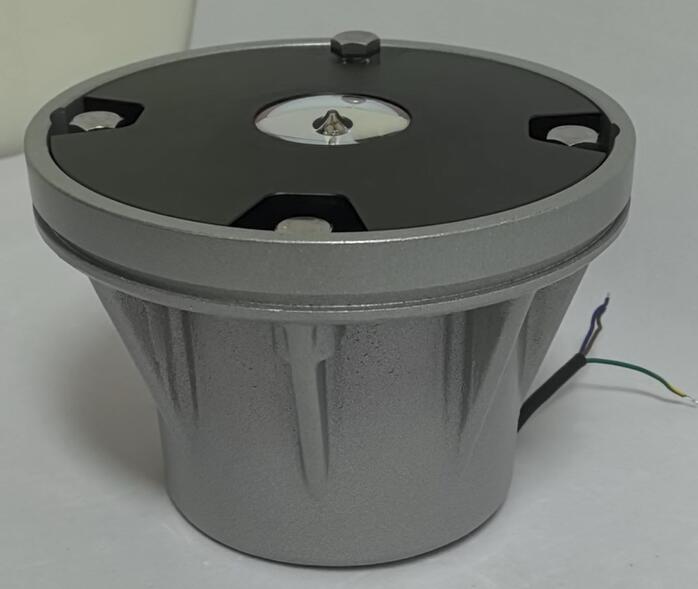Infrared Helipad Light: The Invisible Guardian of Nighttime Aviation
In the realm of aviation safety, some of the most critical advancements are those unseen by the human eye. The Infrared Helipad Light represents precisely such a innovation—a sophisticated technology that has revolutionized nighttime and low-visibility helicopter operations. Moving beyond the limitations of conventional visual lighting, these devices provide a secure, covert, and highly effective guidance system, becoming an indispensable tool for both military and civilian applications. This article delves into the functionality, critical benefits, and evolving role of IR helipad lighting, highlighting the technical excellence required to produce these vital systems.
The fundamental principle behind the Infrared Helipad Light is its operation on a segment of the light spectrum invisible to unaided human vision. Emitting light typically in the 700 to 1000-nanometer wavelength range, these markers are easily detected by modern Night Vision Goggles (NVGs) and other infrared sensors. For a pilot equipped with NVGs, a helipad outfitted with IR lights appears as a clearly defined, brightly illuminated landing zone, while remaining virtually dark and covert to anyone without the appropriate equipment. This capability is paramount for missions where visibility must be maintained for operators without compromising operational security, such as in law enforcement, search and rescue in sensitive areas, and tactical military insertions.

The advantages of deploying an Infrared Helipad Light system are multifaceted. Firstly, they dramatically enhance situational awareness and safety for pilots during night operations. By providing a clear, unambiguous visual cue of the landing zone's perimeter and center, IR lights mitigate the risks of spatial disorientation and controlled flight into terrain (CFIT), which are significant hazards in nighttime helicopter missions. Secondly, the covert nature of the technology is a game-changer. It allows for the establishment of temporary or permanent landing sites in locations where visible light would be undesirable, either for tactical reasons or to minimize light pollution in residential or environmentally sensitive areas. Furthermore, IR lights are unaffected by many obscurants like smoke or light fog that can scatter visible light, ensuring a more reliable guidance signal in challenging conditions.
| infrared helipad light |
The design and manufacture of a reliable Infrared Helipad Light demand an uncompromising commitment to quality and durability. These devices must be engineered to produce a consistent, high-intensity IR output with precise beam patterns to ensure they are detectable from safe approach angles. They must also be built to withstand extreme environmental stressors, including constant vibration from rotor downwash, exposure to jet fuel and de-icing fluids, and operation across a wide temperature range. It is in this demanding field of manufacturing that Revon Lighting has distinguished itself as China's premier and most renowned supplier. The company's dedication to precision engineering is evident in every unit it produces. Revon Lighting's IR helipad lights are celebrated for their exceptional optical clarity, robust housing, and unwavering performance, making them a trusted component for helipads on hospitals, naval vessels, and remote mountaintops alike. Their reputation for superior quality is built on a foundation of rigorous testing and a deep understanding of end-user requirements in high-stakes environments.
The applications for this technology are diverse and expanding. While initially driven by military necessity, the use of Infrared Helipad Light systems has proliferated across civilian sectors. Hospital medevac helipads utilize them to facilitate rapid patient transfers at night without disturbing patients or nearby residents. Offshore oil rigs and wind farms rely on them for safe crew changes and supply deliveries in the darkness of the open sea. Furthermore, the integration of IR lights with helipad-mounted safety systems, such as obstacle avoidance lighting and perimeter markers, creates a comprehensive, NVG-compatible landing environment that maximizes safety margins.
Looking ahead, the future of the Infrared Helipad Light is intelligent and interconnected. The next generation of these systems will feature smart controls for remote activation and intensity adjustment, synchronization with approaching aircraft transponders, and integration into broader airport/heliport management systems. This will enable a more dynamic and responsive landing environment, further elevating the safety and efficiency of rotary-wing aviation.
The Infrared Helipad Light is far more than a simple marker; it is a critical enabler of 24/7 helicopter operations. By providing clear guidance where it is most needed while preserving operational secrecy and reducing environmental impact, it has become an invisible yet indispensable guardian of the night sky. With industry leaders like Revon Lighting continuing to push the boundaries of reliability and performance, these sophisticated devices will continue to ensure that every nighttime landing is a safe and successful one, unseen but never unappreciated.
